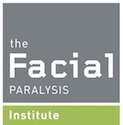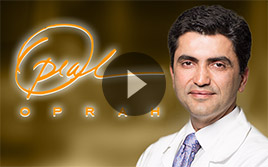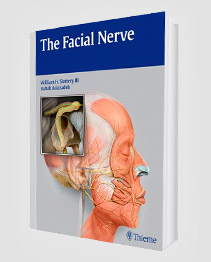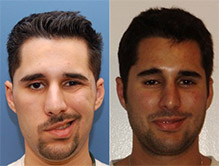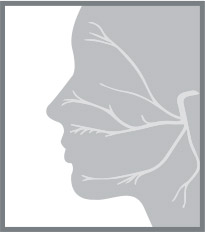Do I Have Bell’s Palsy? Here’s What You Need to Know
Those who experience sudden facial weakness on one side of the face may be dealing with Bell’s palsy. But, it is important to note that Bell’s palsy is a complex condition. As such, comprehensive testing is necessary to verify if an individual’s symptoms are related to Bell’s palsy or another medical condition.
How to Tell If I Have Bell’s Palsy
Bell’s palsy can cause unilateral facial paralysis, facial drooping, and other symptoms. Yet, the condition’s symptoms can replicate those associated with Lyme disease and other medical conditions.
At the first sign of facial paralysis or other symptoms of Bell’s palsy, consult with a doctor. At this point, testing can be used to determine the root cause of these symptoms. Furthermore, a doctor can offer a personalized treatment option to help their patient correct facial paralysis and other symptoms.
What Is a Bell’s Palsy Test?
Bell’s palsy testing is key to ensure proper diagnosis and treatment. Testing allows a doctor to assess a patient’s Bell’s palsy symptoms. It also helps a doctor determine if a patient is dealing with Bell’s palsy or another medical condition that causes facial paralysis.
There is no such thing as a surefire Bell’s palsy test. Rather, multiple Bell’s palsy tests can be used to assess a patient. And, if testing reveals a patient is dealing with Bell’s palsy, a doctor can then provide him or her with an appropriate treatment.
How to Test for Bell’s Palsy
Common types of Bell’s palsy testing include:
- Ear, Nose, and Throat (ENT) Evaluation: Used to test for an inner ear infection or a head or neck tumor or malignancy. Also, an ENT evaluation helps a person identify and address dizziness associated with Bell’s palsy.
- Neurologic Assessment: Used to test an individual’s movement, reflexes, cranial nerves, and level of consciousness.
- Hearing Test: Used to identify hearing damage or inner ear problems.
- Vestibular Test: Used to assess a person’s nerve balance.
- Tearing Test: Used to evaluate the tearing function.
- Computed Tomography (CT) Scan: Used to identify tumors or trauma on the neck and temporal bone.
- Magnetic Resonance Imaging (MRI): Used to evaluate an acoustic neuroma and other types of tumors in the internal auditory canal and brain.
- Electrophysiologic Test: Used to study the electrical flow to the heart. Additionally, an electromyography (EMG) or electroneurography (ENoG) may be performed in patients with severe cases of facial paralysis who are believed to have Bell’s palsy.
For those who experience sudden facial paralysis that may be related to Bell’s palsy, go to an emergency room. Next, testing can be used to find out if any tumors are present. It can also be used to pinpoint if Bell’s palsy or other trauma is causing facial paralysis.
What Happens If a Patient Receives a Bell’s Palsy Diagnosis?
If a doctor rules out all other causes of facial paralysis after testing, he or she may diagnose a patient with Bell’s palsy. At this time, the patient may receive high-dose steroids (prednisone) and antiviral medications (Famvir or Valtrex) for immediate treatment. Or, if a patient is pregnant and displays Bell’s palsy symptoms, she should consult with her OB/GYN. If a patient shows signs of complete facial paralysis, additional tests and treatments may be needed as well.
In most cases, Bell’s palsy disappears on its own within a few weeks or months of onset. If patients experience Bell’s palsy symptoms that linger for eight months or longer, however, they can schedule a consultation with Dr. Babak Azizzadeh of The Facial Paralysis Institute. That way, a patient can receive extensive Bell’s palsy testing. If Dr. Azizzadeh finds his patient is dealing with Bell’s palsy, he can offer a personalized treatment designed to deliver long-term symptomatic relief.
How Does Dr. Azizzadeh Treat Bell’s Palsy Symptoms?
Dr. Azizzadeh understands the ideal Bell’s palsy treatment varies based on the severity of his patient’s symptoms and other factors. After Dr. Azizzadeh evaluates a patient and diagnoses him or her with Bell’s palsy, he may recommend one of several treatments.
Selective neurolysis can be used to correct abnormal regeneration of the facial nerve. During a selective neurolysis procedure, Dr. Azizzadeh maps out the facial nerves via intraoperative EMG. He next decreases the activity of the facial nerves that hinder the smile mechanism. Dr. Azizzadeh then releases the platysma muscle that pulls the corner of the mouth down. This enables Dr. Azizzadeh to help a Bell’s palsy patient correct any “mis-wiring” of the facial nerve that otherwise makes it tough for this individual to smile, frown, or make other facial expressions.
Dr. Azizzadeh performs selective neurolysis surgery at an outpatient surgery center. The procedure has minimal downtime and risks in comparison to other facial nerve procedures, and treatment results often become visible within one day of surgery.
Comparatively, Dr. Azizzadeh may recommend Botox injections to treat Bell’s palsy. Botox injections are safe, effective, and proven to relieve Bell’s palsy symptoms. They temporarily relax hyperactive facial muscles to help Bell’s palsy patients improve their facial symmetry and enhance their facial appearance.
An in-depth evaluation is required to determine if selective neurolysis, Botox, or another treatment can be safe and effective for a Bell’s palsy patient. In addition to Bell’s palsy testing, Dr. Azizzadeh learns about his patient’s medical history and their treatment goals. He offers a custom treatment plan for each Bell’s palsy patient. With this approach, Dr. Azizzadeh helps Bell’s palsy patients overcome long-lasting facial paralysis.
After Dr. Azizzadeh administers treatment for Bell’s palsy, he recommends regular follow-up appointments to ensure his patient can achieve the optimal results. He may also recommend a Bell’s palsy patient use eye protection if he or she struggles to close the eyes completely (lagophthalmos).
Do I Have Bell’s Palsy? To Find Out, Schedule a Consultation with Dr. Azizzadeh
To date, Dr. Azizzadeh has helped many Bell’s palsy patients address their facial paralysis symptoms. He is a double-board certified facial plastic and reconstructive surgeon who is happy to assist Bell’s palsy patients dealing with long-term facial paralysis. For more information or to request an in-person or virtual consultation with Dr. Azizzadeh, please contact us online or call us today at (310) 657-2203.
Request your consultation with Dr. Azizzadeh today
Call us at (310) 657-2203 to schedule an appointment.
Schedule a Consultation